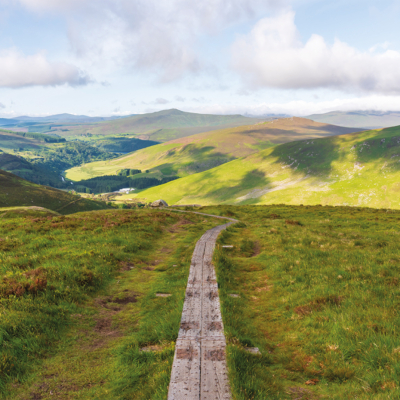A pub quiz in the noughties: name a summer holiday destination outside of the EU, where you can take the car without overnighting on a boat, where you can visit Roman villas, eat magnificent food and day trip to wineries across two countries that make better Champagne than the Champagne you know. Anyone? Then, the answer didn’t exist. Today, it’s the Cotswolds.
The Cotswolds means sheep hills. Even the name sounds gentle, as round and soft as sheep and as benign as an ITV drama. Just like an ITV drama, this part of England was never a destination for me in the past, but I’d flicked through it – it all looked picturesque but too clean and too nostalgic for my taste.
Yes, Champagne can only come from Champagne, but most peeps tasting English sparkling wines wouldn’t know the difference. Those that do have long known that some English sparklers are more delicious and better than the top shelf brands at home. The Cotswolds isn’t a wine destination, but it is a sublime base for ranging east into Wales and wineries like Ancre Hill and south west to any number of fizzy vineyards and where an Irishman, Dermot Sugrue, has had a starring role in putting English bubbles to rival the French on the wine map. But I wasn’t there for the wineries.
I could have done with a map when I was there. I got lost coming from a glorious lunch in Wales and Shaun Hill’s brilliant Walnut Tree. Lost in the Cotswolds already sounds like a Sunday night period drama and the landscape looks familiar because of them. The first thing that strikes you is that this countryside couldn’t happen at home. Even while scrapping with the sat nav through crossroad-ed hamlets and villages and with “In An English Country Garden” as an unwelcome ear worm, you notice how intact everything is. Every village is an Irish tidy town winner. The English were probably to blame initially, but our historic banjaxed aesthetic means that although England has architectural ugliness to match our own, it minds its small market towns and villages better. Most, especially final destination, Lechlade, wouldn’t be allowed to happen here. Some male Irish planner or developer in the 1970s would have made a balls of it and spawned bungalows, cheap brick and PVC monsters. There would be eagles or lions, or eagle-lions on the pillars of big gates guarding small-minded, mean-spirited architecture.

It’s tricky to describe the Cotswolds without sounding like a cliché-generating app. The endless postcard countryside, the neatest agricultural architecture, rolling hills, all that limestone, roadside pubs with signs hung from two chains with two names where you’d expect Morse and Lewis at a table outside or Aragorn lurking in a dark corner in the bar, and all those grand houses where geniuses in candlelit rooms dreamed up Peter (Pan), Alice (in Wonderland) and more than a few Jane (Austen) plot lines, but I wasn’t there for that either.
I made the Cotswolds trip to Thyme, a farm on an estate that goes back to Roman times, owned by the Hibbert family. There is a manor house but it’s private, there’s a hotel, but it lives across a collection of 17th-century houses, cottages and farm buildings. Thyme is a village of sorts. Extremely nice sorts, made up of a sweet pub, a very good cocktail bar, a shop, a hotel, an outdoor spring water pool, a spa and a restaurant, circled by a walloping great farm, that adheres to as many green and slow food charters as you can shake a windfallen organic stick at. It is also beautifully restored and minded. If the Cotswolds had a showroom, then Thyme could be it.
I had come to eat at Ox Barn. Thyme has been open for a while, but Ox Barn is newer and the person at the stove is Charlie Hibbert, who has joined the family business.

Hibbert’s CV includes a primary education in Ballymaloe Cookery School, a series of worldwide gap years and a masters at the magical hands of Jeremy Lee, a brilliant mind and cook whose hall of fame portrait will someday hang in the same wing as Fergus Henderson, Rose Gray and Simon Hopkinson. Hibbert’s food isn’t a take on Lee’s although his principles are at play everywhere.
Ox Barn’s menu is powered by those seriously impressive year-round kitchen gardens and the estate, and for the most part free of air miles, but this to me reads and eats like the great Californian restaurants inspired by Berkeley’s Chez Panisse. Restaurants that have done more to show how to work a garden onto a plate better than other traditions anywhere else in the English-speaking world.
This English California in Ox Barn is Hibbert’s own thing – a menu of picked-that-day ingredients with Italy and a sunny disposition running through it. This sounds simple. It isn’t. Some of the finest cooking is deceptive and disciplined, knowing how to coax an ingredient just enough to let it sing as much as possible without losing its character is hard. There is an extraordinary amount of knowledge, skill and a lack of ego required to make food this good. Hibbert’s talent is in his restraint, and what isn’t on the plate.

By now those working gardens will have started to pop but even back in chilly February, I’d be there for the artichoke, fennel, ricotta and lemon then a cold-busting hogget with beans, bagna cauda and cime di rapa followed by meringue with crab apple and poached pear.
Every month there’s a drinks list that tours the aforementioned wineries without leaving the couch and you can take another run at Ox Barn for breakfast where you’ll eat like a Bay Area billionaire.
Charlie Hibbert was always going to do well but with this edible playground as his family home and with Thyme on his side this young chef has turned what might have been another fluffy ITV drama into a big screen blockbuster.
LOVETHEGLOSS.IE?
Sign up to our MAILING LIST now for a roundup of the latest fashion, beauty, interiors and entertaining news from THE GLOSS MAGAZINE’s daily dispatches.










